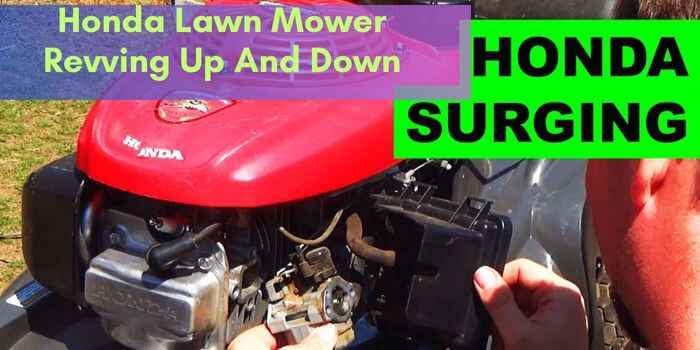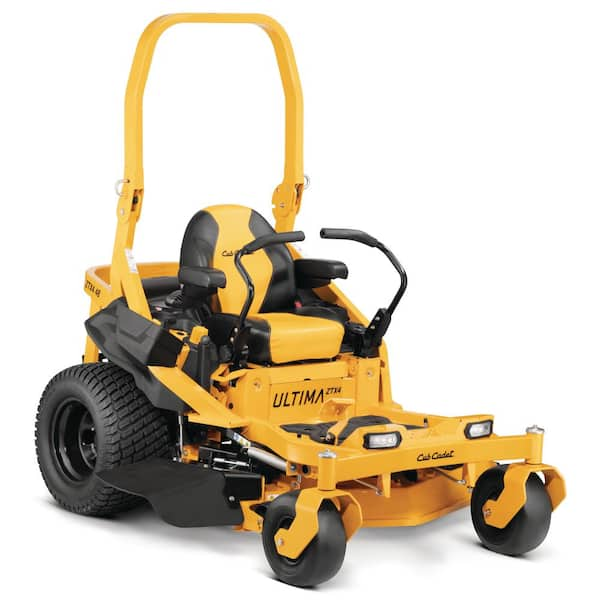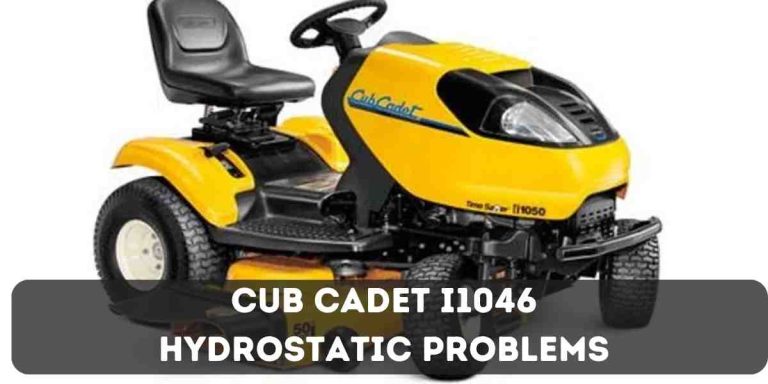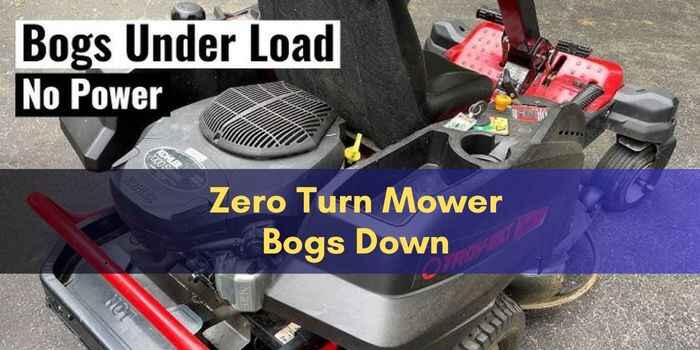Cub Cadet Bagger Problems: Troubleshooting Solutions Revealed!
Cub Cadet bagger problems can be resolved by troubleshooting the bagger system and checking for clogged tubes or damaged parts.
Common Cub Cadet Bagger Problems
When it comes to maintaining a perfectly manicured lawn, a reliable bagger system is a must-have accessory for your Cub Cadet mower. However, like any other mechanical equipment, bagger systems can encounter various problems that hinder their performance. Identifying and addressing these issues promptly is crucial to ensure efficient grass collection and a well-maintained lawn. Let’s explore some of the common Cub Cadet bagger problems and the solutions to keep your yard looking its best.
<h3>Bagging System Failure</h3>
One of the major issues gardeners face is bagging system failure, resulting in poor or no grass collection. This can happen due to several reasons, including:
- Blockage in the tubes or chute
- Blades not cutting the grass properly
- Faulty bagging system components
If you experience bagging system failure, it is essential to pinpoint the specific cause to rectify the issue effectively.
Damaged or Clogged Tubes
Clogged or damaged tubes are a common culprit behind bagger system problems. Grass clippings, debris, or dirt can accumulate in the tubes, obstructing the airflow and negatively impacting grass collection. Regular cleaning and unclogging of these tubes are crucial to maintaining optimal functionality.
Improper Installation of the Bagger
The improper installation of the bagger can lead to various issues, such as tubes not attached securely, loose connections, or misaligned parts. It is vital to carefully follow the manufacturer’s instructions when installing the bagger to ensure a proper fit and avoid any problems down the line.
Overloading the Bagger
While it may be tempting to stuff as much grass as possible into the bagger, overloading it can strain the system and impede its performance. It is essential to empty the bagger regularly and avoid exceeding the recommended capacity to prevent clogging and minimize stress on the bagger components.
Faulty Bagging System Components
A faulty bagging system component, such as a malfunctioning fan, impeller, or collector, can significantly affect grass collection. Regular inspection of these components is crucial, and if any component is found to be faulty, it should be replaced promptly to ensure optimal performance of the bagger system.
Uneven or Spotty Grass Collection
If you notice that your bagger is collecting grass unevenly or leaving spots of uncollected grass on your lawn, this could indicate an issue with the bagging system. Possible causes may include uneven mower deck height, dull or damaged blades, or insufficient airflow. Regularly inspecting and maintaining these components can help achieve a uniform grass collection across your lawn.
Mismatched Mower and Bagger
Using a bagger that is not compatible with your specific Cub Cadet mower can lead to problems such as poor grass collection and attachment issues. Always ensure that the bagger you purchase is designed for your specific Cub Cadet mower model to avoid any compatibility issues.
Insufficient Airflow in the Bagger System
Adequate airflow is critical for effective grass collection. If you consistently face issues with grass clippings not being properly sucked into the bagger, it could signify insufficient airflow in the system. Checking and cleaning the air filter, ensuring the tubes are clear, and maintaining proper mower speed can help improve the airflow and enhance the bagging performance.
Clogged or Damaged Bagger Chute
Another common problem is a clogged or damaged bagger chute. Grass clippings, debris, or even a small rock can obstruct the chute, impeding the grass collection. Regular inspection and cleaning of the bagger chute can prevent blockages and ensure smooth grass flow into the bagger.
Dull or Damaged Blades
The blades are crucial for cutting the grass effectively and facilitating proper grass collection. If the blades are dull or damaged, they may not cut the grass cleanly, leading to uneven grass collection or blockages in the bagger system. Regularly inspecting and sharpening or replacing the blades when necessary can help maintain optimal bagging performance.
Bagging System Maintenance
To ensure the longevity and efficiency of your Cub Cadet bagger system, regular maintenance is essential. Here are some maintenance tasks to prioritize:
- Regular Cleaning and Inspection: Remove grass clippings, debris, or any blockages from the bagger tubes, chute, and other components.
- Lubrication of Moving Parts: Apply lubricant to all the movable parts, such as hinges, to ensure smooth operation.
- Replacing Worn-out Parts: Inspect the bagger system components regularly, and if any part is worn-out or damaged, replace it promptly to avoid further issues.
- Proper Storage of Bagger during Off-season: When not in use, store the bagger system in a dry and sheltered area to protect it from weather damage and prolong its lifespan.
With proper maintenance and timely troubleshooting, you can keep your Cub Cadet bagger system in top-notch condition and enjoy a well-manicured lawn all year round.
Troubleshooting Solutions For Bagging System Failure
If your Cub Cadet bagger is not working as expected, it can be frustrating and hinder the effectiveness of your lawn care routine. However, by following a few troubleshooting solutions, you can quickly identify and resolve common bagging system problems. In this section, we will discuss various steps you can take to address bagger issues and ensure optimal performance. By checking for damaged or clogged tubes, inspecting tubes for cracks or breaks, clearing debris and clogs, replacing damaged tubes if necessary, ensuring proper installation, and following the manufacturer’s instructions, you can keep your bagging system running smoothly.
Check for Damaged or Clogged Tubes
One of the first steps in troubleshooting a bagging system failure is to check for damaged or clogged tubes. Over time, debris and clippings can accumulate in the tubes, causing blockages that impede the flow of grass into the bags. Begin by visually inspecting the tubes for any visible damage, such as cracks or breaks. If you notice any issues, proceed to the next troubleshooting step.
Inspect Tubes for Cracks or Breaks
Inspecting the tubes for cracks or breaks is an essential part of troubleshooting bagging system problems. These damages can result in air leaks or blockages, preventing the proper suction required for effective bagging. Carefully examine the tubes along their entire length, looking for any signs of damage. If you find cracks or breaks, move on to the next troubleshooting solution.
Clear Debris and Clogs
If you have identified clogs or blockages in the bagging system tubes, it is crucial to clear them to restore proper functionality. Use a soft brush or your finger to remove any debris or clippings obstructing the tubes. Ensure thorough cleaning to avoid future clogs that could lead to system failure.
Replace Damaged Tubes if Necessary
If you discover significant damage, such as cracks or breaks in the tubes, they may need to be replaced. Damaged tubes can compromise the bagging system’s performance and should be addressed promptly. Contact your Cub Cadet dealer or authorized service center to obtain the appropriate replacement tubes for your specific bagging system model.
Ensure Proper Installation of the Bagger
One common cause of bagging system failure is improper installation. Carefully follow the manufacturer’s instructions to ensure correct installation and connection of all components. Check that the tubes are properly secured and that there are no loose or missing connections.
Double-check all Connections and Fasteners
In addition to ensuring proper installation, it is essential to double-check all connections and fasteners. Over time, vibrations from regular use can loosen fasteners, causing the bagger to malfunction. Use a wrench or socket set to tighten any loose connections or fasteners to secure the bagging system in place.
Adjust Bagger Level and Position as Needed
The bagger’s level and position can affect its performance. If you notice grass clippings are not entering the bags efficiently or the bagger is not collecting clippings evenly, consider adjusting the bagger’s level or position. Follow the manufacturer’s instructions on how to adjust the bagger to ensure optimal performance.
Avoid Overloading the Bagger
Overloading the bagger can lead to system failure and poor bagging results. Although baggers have a capacity limit, it is essential to monitor and avoid exceeding it during mowing. Keep an eye on the bag’s capacity and empty it before it becomes overloaded.
Monitor Bag Capacity during Mowing
While mowing, regularly monitor the bag’s capacity to prevent overloading. If the bagging system is not collecting clippings effectively, it could be due to an overfilled bag. Developing a routine to check the bag’s capacity periodically during mowing will help maintain optimal bagging performance.
Empty the Bag before it Becomes Overloaded
Emptying the bag before it becomes overloaded is crucial to prevent clogs and maintain efficient bagging. If you notice the bag is reaching its maximum capacity, stop mowing and empty it promptly. This will ensure continuous airflow and prevent system failures caused by excessive clippings.
Consider Installing a Bagger with Larger Capacity
If you consistently find that your bagger’s capacity is insufficient for your lawn size, you may want to consider upgrading to a bagger with a larger capacity. Cub Cadet offers baggers with various capacities, allowing you to choose one that meets your specific needs. Consult with your Cub Cadet dealer or authorized service center for recommendations on baggers with larger capacities.
Inspect and Replace Faulty Bagging System Components
If you have completed the previous troubleshooting steps and are still experiencing bagging system failure, it may be necessary to inspect and replace faulty components. Check for damages in the bags or frames, ensuring they are not torn or broken. Additionally, replace any worn-out or broken parts, such as clips or hinges, that may be compromising the bagging system’s performance.
Check for Damages in the Bags or Frames
Inspect the bags and frames for any damages that may impact the bagging system’s effectiveness. Look for tears, holes, or other signs of wear and tear. Damaged bags or frames can hinder the bagging process and result in clippings escaping or insufficient collection.
Replace Worn-out or Broken Parts
If you identify worn-out or broken parts during your inspection, it is crucial to replace them promptly. Faulty components can compromise the bagging system’s functionality and diminish its performance. Contact your Cub Cadet dealer or authorized service center to obtain genuine replacement parts for your bagger model.
Ensure Compatibility of Replacements
When replacing any bagging system components, ensure compatibility with your specific Cub Cadet bagger model. Using incompatible replacements can lead to further system failure and may even void warranty. Always consult the manufacturer’s guidelines or seek professional assistance to guarantee the correct replacements for your bagging system.
Troubleshooting Solutions For Uneven Or Spotty Grass Collection
Are you experiencing uneven or spotty grass collection with your Cub Cadet bagger? Don’t worry, we’ve got you covered. In this section, we’ll discuss some effective troubleshooting solutions to help you achieve a clean and even grass collection with your Cub Cadet bagger.
Choose a Compatible Mower and Bagger Combination
One of the key factors that can affect grass collection is the compatibility between your mower and bagger. Ensure that you are using a Cub Cadet bagger that is specifically designed to fit your mower model. Using a mismatched or incompatible bagger can lead to uneven grass collection.
Consider Mower Deck Size and Bagging System Compatibility
When choosing a bagger, it’s important to consider the size of your mower’s deck and its compatibility with the bagging system. A bagger that is too small for your mower deck may result in inadequate grass collection, while a bagger that is too large may cause clogging and spotty collection. Refer to the specifications provided by Cub Cadet to ensure the proper deck and bagging system match.
Consult the Cub Cadet Manual or Customer Support
If you’re experiencing trouble with your bagger, consulting the Cub Cadet manual or reaching out to their customer support can provide valuable guidance. The manual usually contains troubleshooting tips and solutions specific to your bagger model. Alternatively, the customer support team can offer expert advice based on your individual situation.
Ensure Sufficient Airflow in the Bagger System
For optimal grass collection, it’s crucial to maintain sufficient airflow in the bagger system. Check the bagger to make sure there are no restrictions or leaks that could hamper the airflow. Ensure that all connections and seals are tight and in good condition. Adequate airflow will improve the efficiency of the bagging system and result in more even grass collection.
Check for Blockages in the Chute or Discharge Opening
Blockages in the chute or discharge opening can prevent proper grass collection. Inspect the chute and discharge opening for any debris or clippings that may be obstructing the flow. Clear these blockages using a brush or garden hose to ensure unobstructed grass collection.
Clean or Replace Clogged Air Filters
Clogged air filters can restrict airflow, affecting the grass collection performance of the bagger. Regularly inspect and clean the air filters, following the manufacturer’s instructions. If the filters are damaged or excessively clogged, replace them to ensure optimal airflow and consistent grass collection.
Remove Excessive Grass Clippings from the Bagger
Excessive grass clippings in the bagger can reduce its capacity and impact grass collection. Regularly empty the bagger to prevent clippings from accumulating and obstructing the airflow. Emptying the bagger promptly will help maintain a clean and even grass collection.
Clear Clogged or Damaged Bagger Chute
A clogged or damaged bagger chute can cause spotty or uneven grass collection. Check the chute for any clogs or damage and clear them immediately. If the chute is damaged beyond repair, consider replacing it with a new one to ensure consistent grass collection.
Inspect Chute for Debris or Obstructions
Debris or obstructions in the chute can disrupt grass collection. Regularly inspect the chute for any debris, such as leaves or twigs, and remove them. Keeping the chute clean and free from obstructions will enhance the bagging system’s performance.
Use a Brush or Garden Hose to Clean the Chute
Cleaning the chute regularly is essential to maintain proper grass collection. Use a brush or a garden hose to remove any grass clippings or dirt that may have accumulated inside the chute. This will help maintain unobstructed grass flow into the bagger.
Repair or Replace Damaged Chute Parts, if Necessary
If you notice any damage or wear on the chute parts, it’s crucial to repair or replace them promptly. Damaged chute parts can affect grass collection performance. Consult the Cub Cadet manual or customer support for guidance on repairing or replacing damaged chute parts.
Maintain Sharp and Balanced Mower Blades
The condition of your mower blades can significantly impact grass collection. Dull or unbalanced blades can result in an uneven cut, leading to spotty grass collection. Regularly inspect and maintain sharp and balanced mower blades for optimal grass collection performance.
Regularly Sharpen Blades to Ensure Clean Cuts
Blade sharpening is essential to achieve clean and precise grass cuts. Regularly sharpen your mower blades using the appropriate tools and techniques recommended by Cub Cadet. Sharp blades will ensure a clean cut, contributing to improved grass collection.
Balance Blades to Prevent Vibration and Uneven Cutting
Unbalanced mower blades can cause vibration and result in an uneven cut, leading to irregular grass collection. Balance the blades using a blade balancer to ensure smooth and even operation. Balanced blades will provide a consistent and efficient grass collection experience.
Replace Dull or Damaged Blades Promptly
If your mower blades are dull or damaged, they should be replaced promptly. Dull blades can tear the grass instead of cleanly cutting it, negatively impacting grass collection. Purchase replacement blades that meet the specifications recommended by Cub Cadet for optimal results.
Tips For Proper Bagging System Maintenance
Proper maintenance of your Cub Cadet bagging system is essential to ensure that it continues to operate smoothly and effectively. Regular cleaning, inspection, and lubrication of the bagger’s components will help prevent problems and extend its lifespan. In this article, we will discuss some important tips to help you maintain your bagging system and keep it in top condition.
Regular Cleaning and Inspection
Regular cleaning and inspection should be part of your bagging system maintenance routine. This helps to identify any issues early on and prevent further damage. Here are some steps to follow:
- Remove Grass Clippings and Debris from the Bagging System:
- After each use, remove grass clippings and debris from the bagging system. This prevents clogging and ensures proper airflow.
- Check for Any Signs of Wear or Damage:
- Inspect the bagger’s components for any signs of wear or damage, such as tears in the bags or cracks in the housing. Address these issues promptly to avoid further problems.
- Clean and Dry the Bags before Storage:
- Before storing the bagging system, clean the bags thoroughly with water and mild detergent. Allow them to dry completely to prevent mold or mildew growth.
Lubrication of Moving Parts
Lubricating the moving parts of your bagging system is crucial to ensure smooth operation. Follow these steps:
- Apply Lubricant to Hinges, Latches, and Other Moving Parts:
- Apply lubricant to hinges, latches, and other moving parts to reduce friction and prevent rust.
- Ensure Smooth Operation of the Bagging System:
- After lubrication, operate the bagging system to ensure smooth movement of the parts. Address any stiffness or resistance promptly.
Replace Worn-out Parts
As your bagging system ages, certain components may wear out and need replacement. Keep an eye out for these signs:
- Monitor the Condition of Bagging System Components:
- Regularly inspect the condition of components such as the bags, chute, and frame. Look for signs of wear or damage.
- Replace Any Parts Showing Signs of Wear or Damage:
- If you notice worn-out or damaged parts, replace them with genuine Cub Cadet replacement parts to ensure proper fit and function.
Proper Storage of Bagger during Off-season
During periods of non-use, proper storage of your bagging system is essential to prevent deterioration. Follow these guidelines:
- Clean and Dry the Bagging System:
- Before storing the bagger, clean it thoroughly and ensure it is completely dry. This helps prevent corrosion and damage.
- Store in a Dry and Protected Area:
- Find a dry and protected area, such as a shed or garage, to keep your bagging system safe from the elements.
- Follow Manufacturer’s Guidelines for Long-term Storage:
- Refer to the manufacturer’s guidelines for any specific instructions on long-term storage of your bagging system.
By following these tips for proper bagging system maintenance, you can ensure that your Cub Cadet bagger remains reliable and efficient for years to come. Regular cleaning, inspection, and lubrication, as well as timely replacement of worn-out parts, will help keep your bagging system in top shape.
Frequently Asked Questions For Cub Cadet Bagger Problems
What Are Common Problems With Cub Cadet Baggers?
Problems with Cub Cadet baggers can include clogging, uneven performance, and difficulty in installation. These issues can affect the bagger’s ability to effectively collect grass clippings and debris from your lawn.
Why Is My Cub Cadet Bagger Not Collecting Grass Clippings?
There are several reasons why your Cub Cadet bagger may not be collecting grass clippings. It could be due to a clogged chute, worn-out or damaged bags, or incorrect installation. Checking and resolving these issues can help improve the bagger’s collection performance.
How Can I Prevent Clogging In My Cub Cadet Bagger?
To prevent clogging in your Cub Cadet bagger, ensure that the grass is not too wet or too long before mowing. Regularly clean the bagger chute and deck to remove any debris buildup. Additionally, consider mowing at a slower speed to allow the bagger to properly collect the clippings without getting overwhelmed.
What Can I Do If My Cub Cadet Bagger Is Not Fitting Properly?
If your Cub Cadet bagger is not fitting properly, double-check the compatibility with your specific model and make sure you have followed the installation instructions correctly. In case of any discrepancies or issues, contact Cub Cadet customer service for further assistance.
Conclusion
To sum it up, addressing Cub Cadet bagger problems is essential for an optimal lawn care experience. From clogging issues to inadequate bagging capacity, these challenges can hinder the efficiency of your mower. By being proactive in maintenance, regularly checking for obstructions, and using proper bagging techniques, you can overcome these problems.
Remember, a well-functioning bagger ensures a tidy and beautiful lawn. So, take the necessary steps to keep your Cub Cadet bagger running smoothly. Happy mowing!





